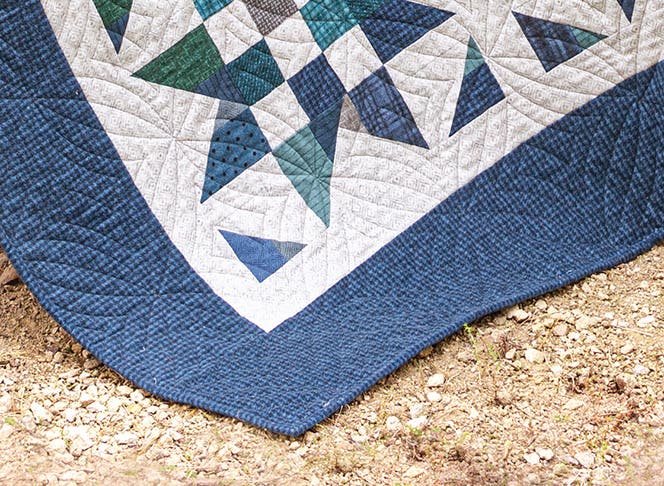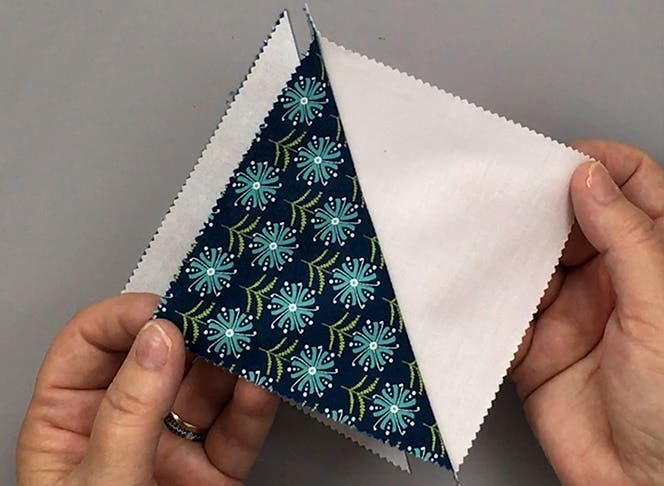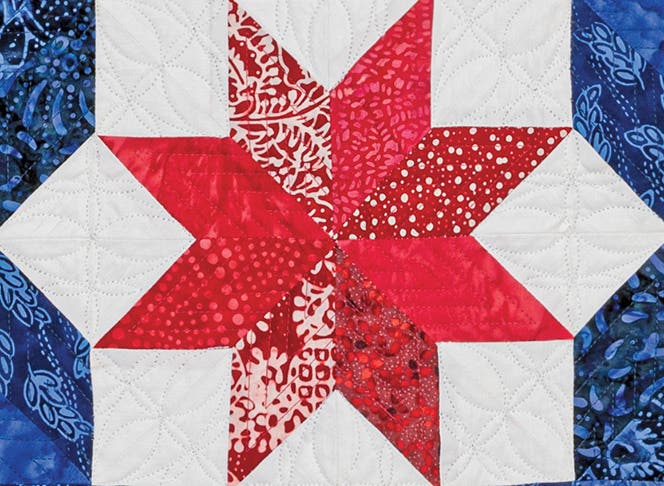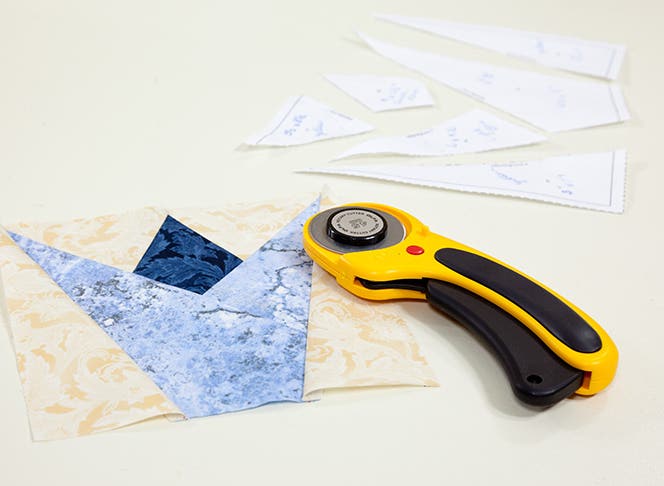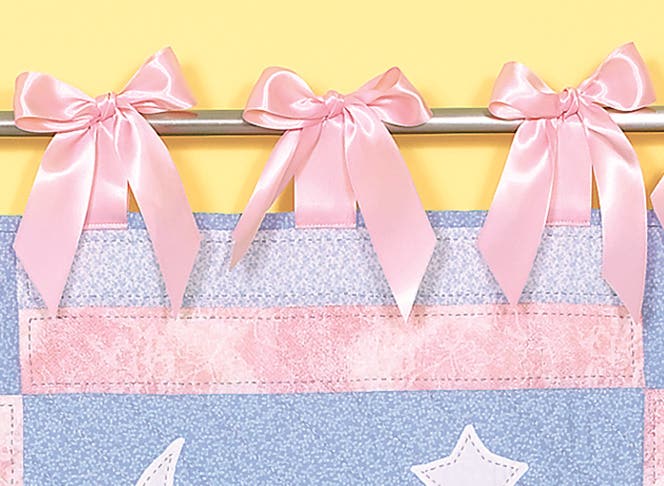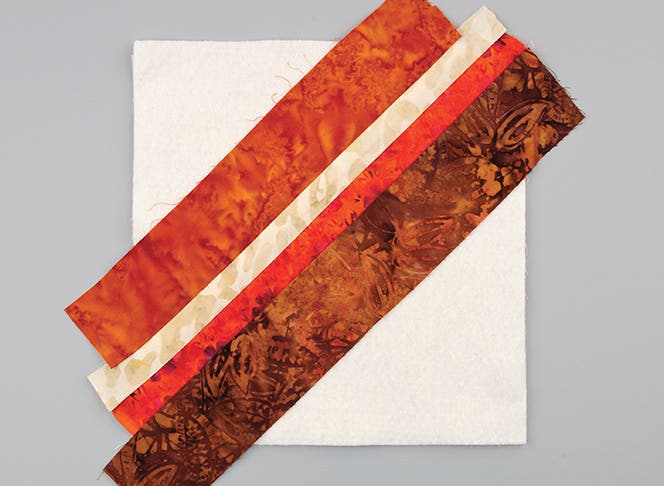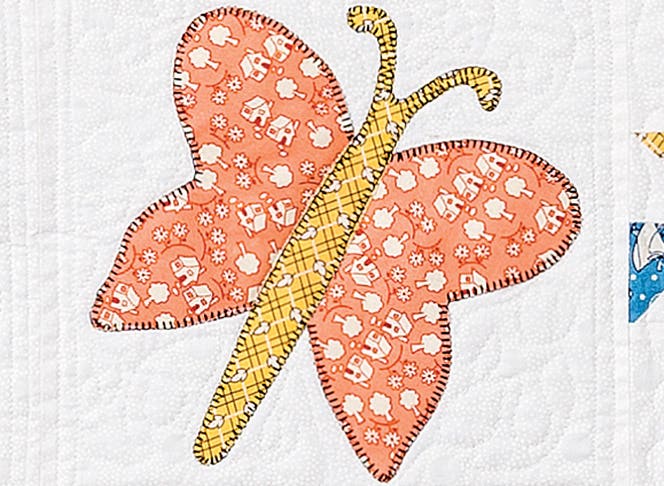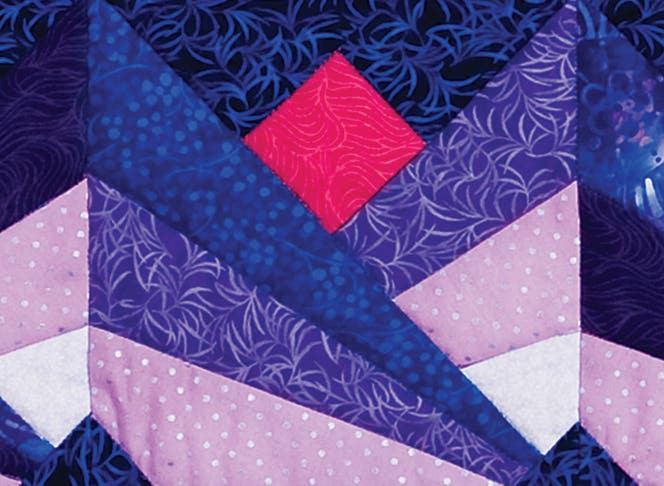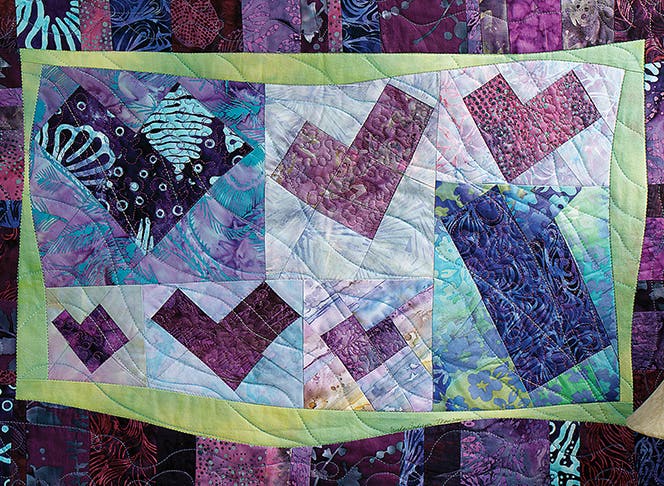Quilt How-Tos
Learn all the basic stitches needed to start on various crochet projects as well as other techniques such as increasing and decreasing and how to read patterns and symbols.
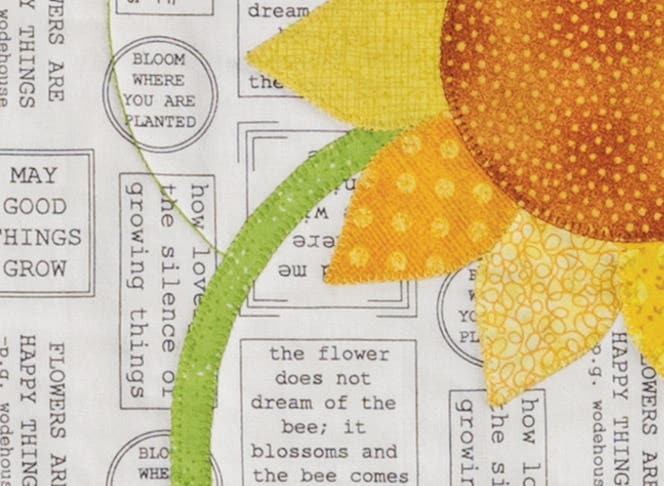

Here is a fast and accurate way to apply bias stems, stitching them by machine and finishing them by hand.
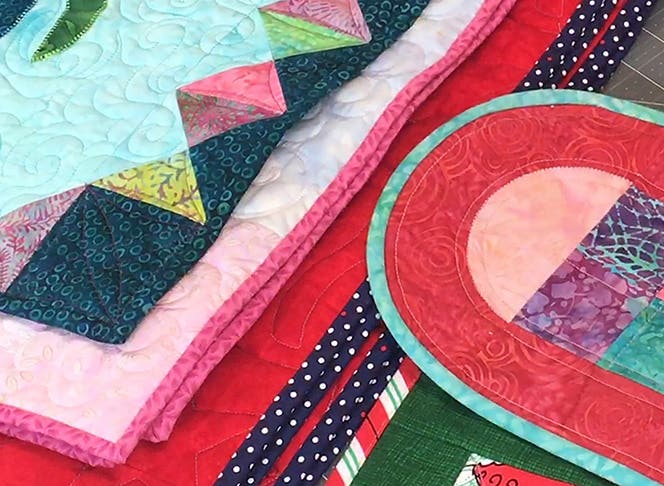

To determine the length of binding needed, add all four sides of the quilt plus 15" to account for mitered corners and extra binding.
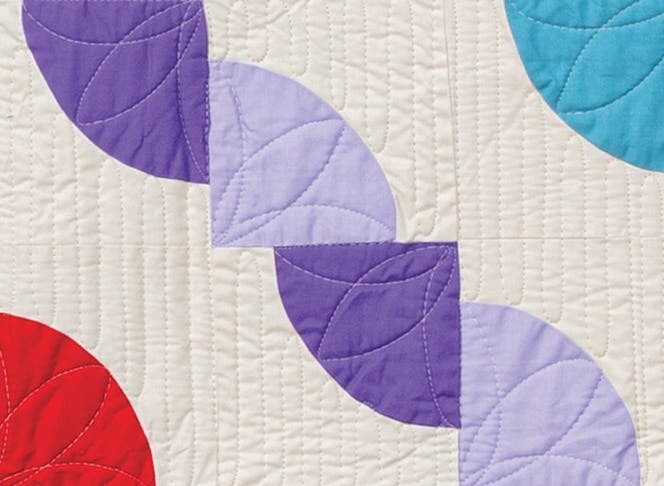

There are many traditional quilt blocks and free-form designs that use curves. Like many other quilting techniques, a few tips ...
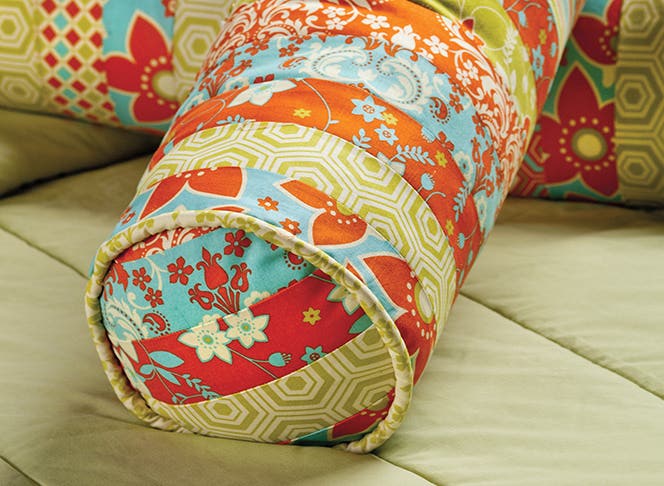

Inserting homemade, fabric-covered cord around the edges of a pillow gives it a tailored look for a more formal setting.
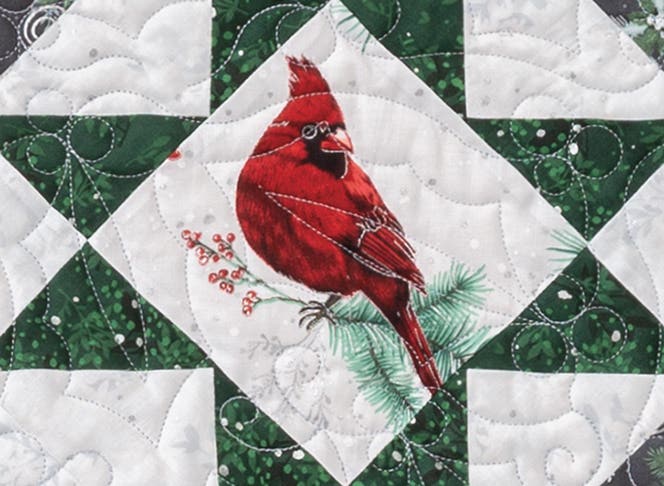

The quilting term "fussy-cut" refers to selectively cutting fabric to create patch or unit shapes that showcase a particular motif.
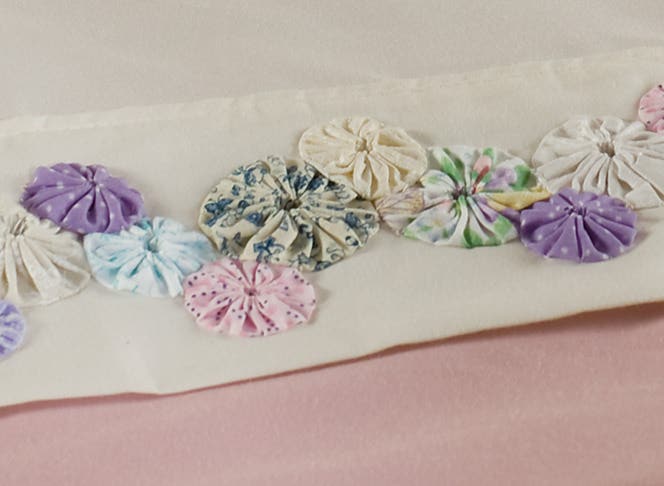

To make any size yo-yo, trace the size of circle desired or indicated in the pattern using a template.
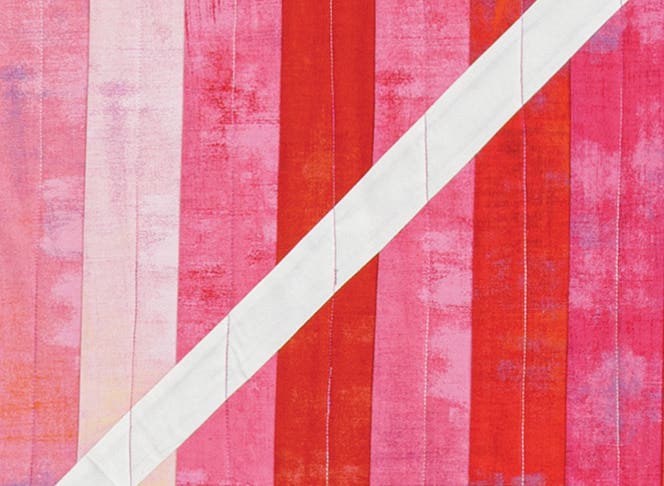

Angled seams can be difficult to match. To make sure your angled seams match well between blocks, units or rows.
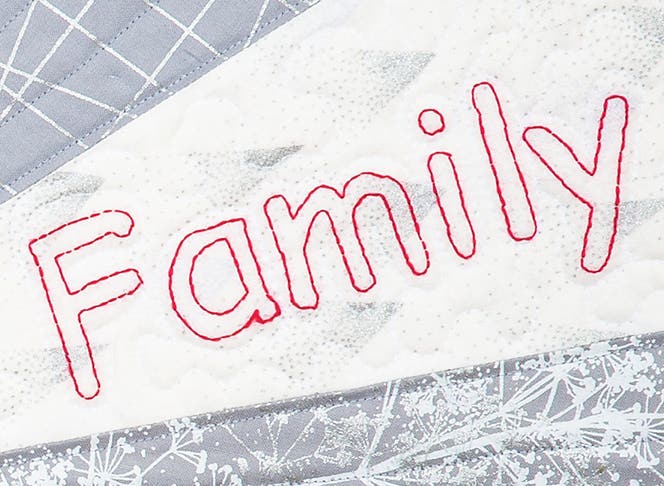

Needle-turn applique, also known as hand applique, is a traditional fabric technique where pieces of fabric ...
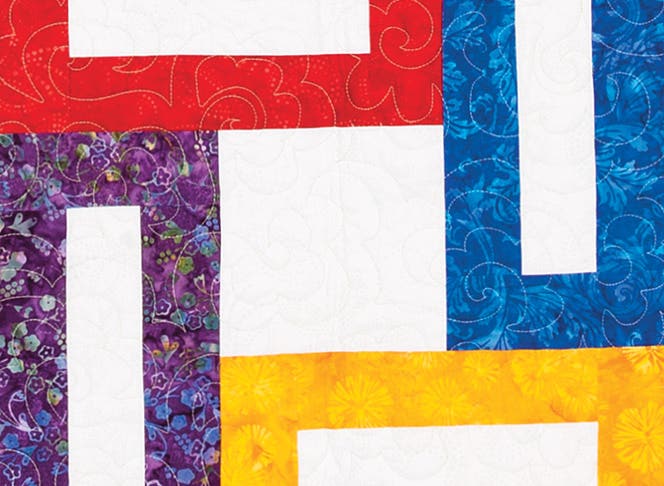

Use partial seaming to join a variety of unevenly placed pieces in a block or unevenly placed blocks or sections in a quilt.
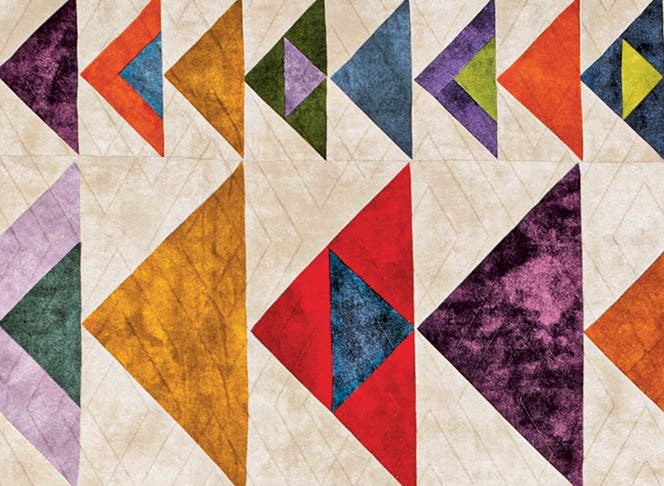

Here are three ways to easily make flying geese units for any of your quilting projects. Try each of these out to find your favorite technique.
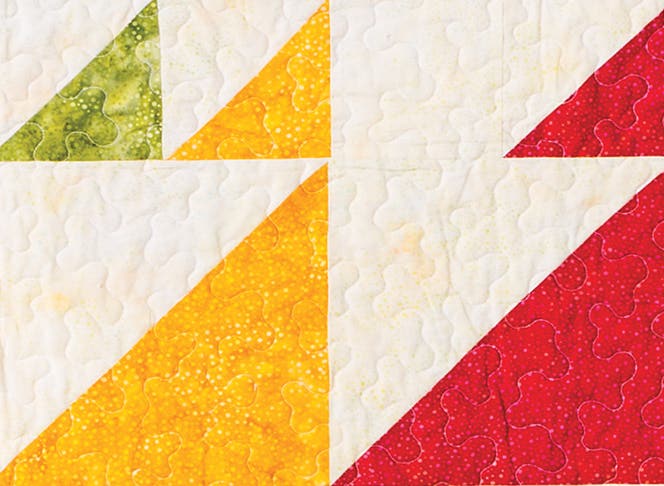

Streamline the piecing process and make perfectly pieced half-square triangle units using triangle piecing paper.
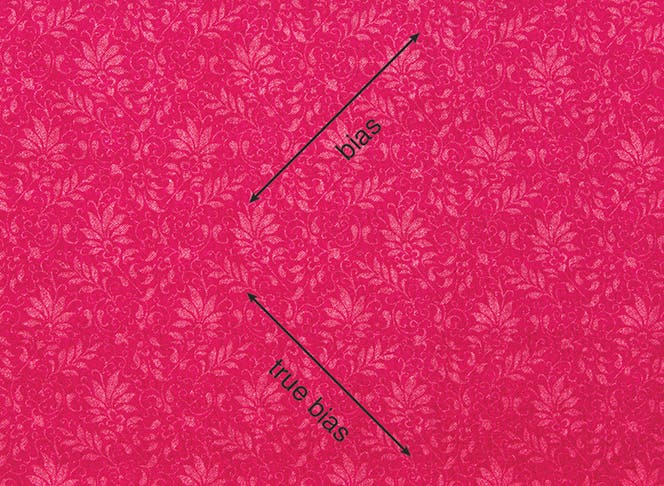

Working with triangles or odd shapes means working with bias edges. While bias edges have a reputation ...

